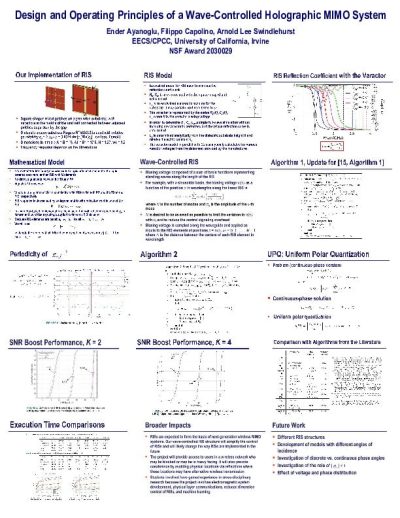Authors
Ender Ayanoglu, Filippo Capolino, A. Lee Swindlehurst
Abstract
The problem of optimizing discrete phases in a reconfigurable intelligent surface (RIS) to maximize the received power at a user equipment is addressed. Necessary and sufficient conditions to achieve this maximization are given. These conditions are employed in an algorithm to achieve the maximization. New versions of the algorithm are given that are proven to achieve convergence in N or fewer steps whether the direct link is completely blocked or not, where N is the number of the RIS elements, whereas previously published results achieve this in KN or 2N number of steps where K is the number of discrete phases. Thus, for a discrete-phase RIS, the techniques presented in this work achieve the optimum received power in the smallest number of steps published in the literature. In addition, in each of those N steps, the techniques presented in this paper determine only one or a small number of phase shifts with a simple elementwise update rule, which result in a substantial reduction of computation time, as compared to the algorithms in the literature. As a secondary result, we define the uniform polar quantization (UPQ) algorithm which is an intuitive quantization algorithm that can approximate the continuous solution with an approximation ratio of sinc2(1/K) and achieve low time-complexity, given perfect knowledge of the channel.

